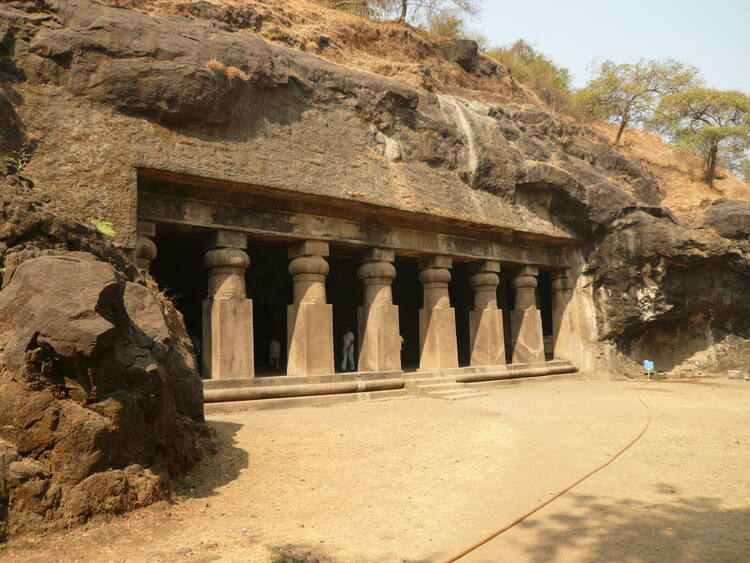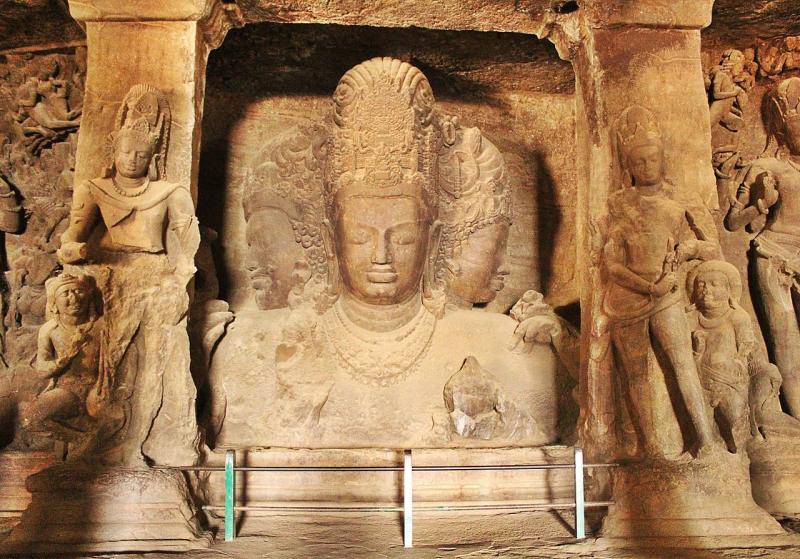The Elephanta Caves contain rock cut stone sculptures that show syncretism of Hindu and Buddhist ideas and iconography.The caves are hewn from solid basalt rock. Except for a few exceptions, much of the artwork is defaced and damaged. The main temple's orientation as well as the relative location of other temples are placed in a mandala pattern. The carvings narrate Hindu mythologies, with the large monolithic 20 feet (6.1 m) Trimurti Sadashiva (three-faced Shiva), Nataraja (Lord of dance) and Yogishvara (Lord of Yoga) being the most celebrated.
These date them between 5th and 9th century, and attribute them to various Hindu dynasties.They are more commonly placed between 5th and 7th centuries. Most scholars consider it to have been completed by about 550 CE.
They were named Elefante – which morphed to Elephanta – by the colonial Portuguese when they found elephant statues on it. They established a base on the island, and its soldiers damaged the sculpture and caves. The main cave (Cave 1, or the Great Cave) was a Hindu place of worship until the Portuguese arrived, whereupon the island ceased to be an active place of worship.The earliest attempts to prevent further damage to the Caves were started by British India officials in 1909. The monuments were restored in the 1970s.In 1987, the restored Elephanta Caves were designated a UNESCO World Heritage Site. It is currently maintained by the Archaeological Survey of India (ASI).




Post a Comment